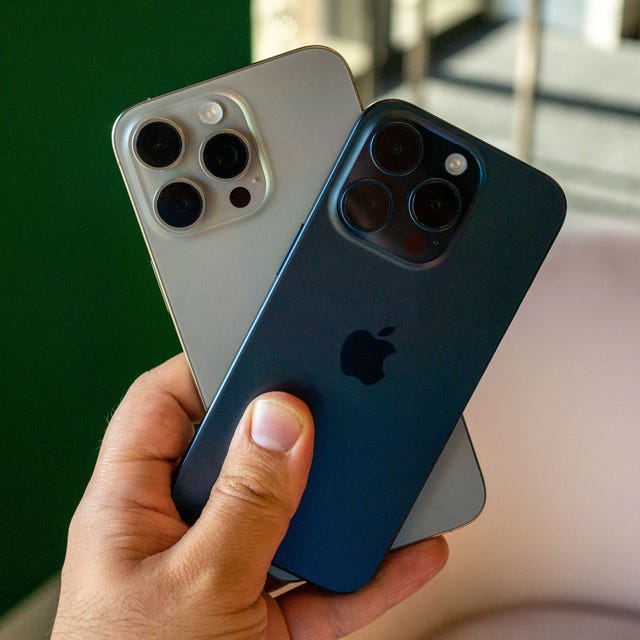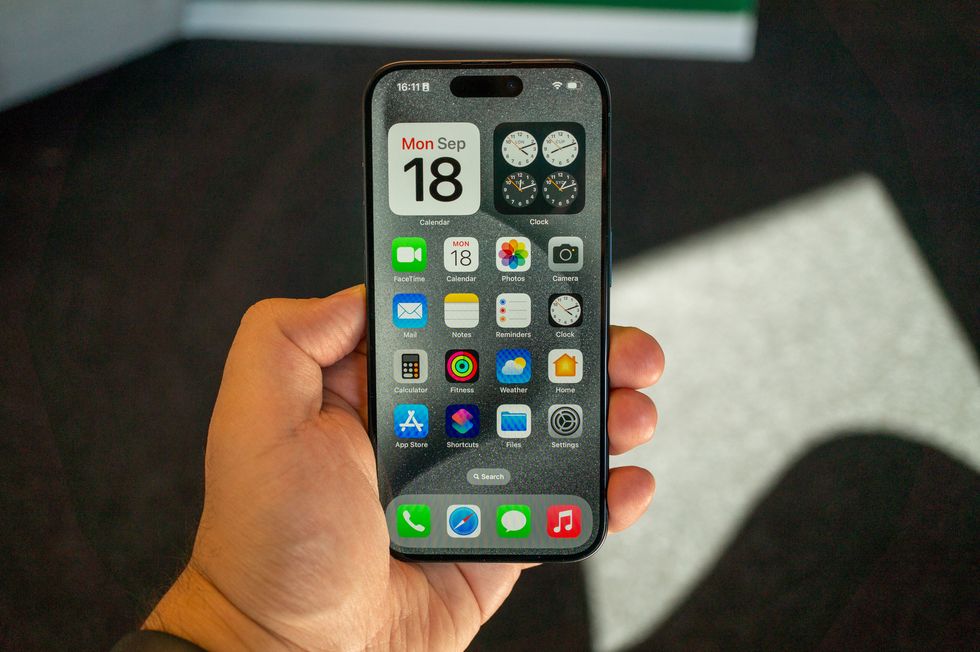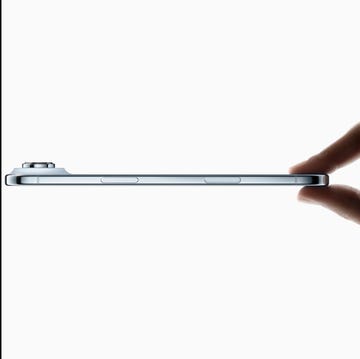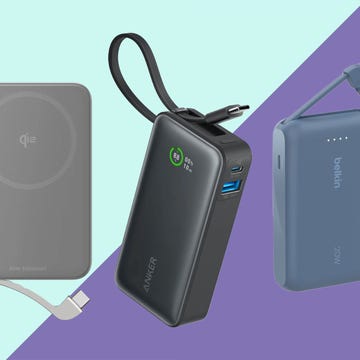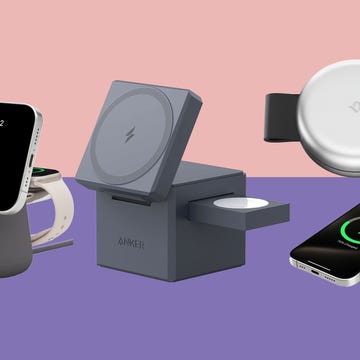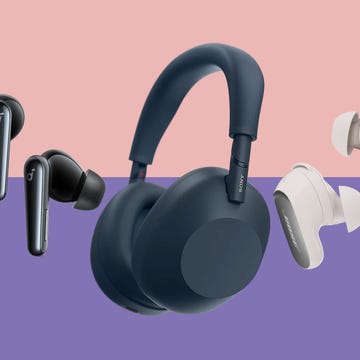Most people considering an iPhone upgrade are looking at the standard models just announced by Apple at its annual September event, but those of us after the best next-generation features and photography capabilities in these smartphones will only have eyes for the Pro-level lineup.
Of course, it’s hard to define what “Pro” really means in the electronics world nowadays. I certainly don’t think it means these handsets are only for “professional” users and the best way I can describe this range is that it’s at the forefront of the latest developing technologies, so it’s the way to go if you like being an early adopter of new gadgets. Anyone already owning an iPhone 14 Pro will look at the ordinary iPhone 15 and recognise many of the same features, so they won’t see much change without stepping up to the new Pros.
What’s new in the iPhone 15 Pro and iPhone 15 Pro Max?
I'll try to keep this brief, as the 15 Pro and 15 Pro Max also have some of the same upgrades as the iPhone 15 and 15 Plus, including the versatile USB-C charging port, upgraded portrait camera mode, and support for other iOS 17 software features. And, in some ways, they’re a smaller change when compared to the 14 Pro and 14 Pro Max, continuing to deliver the same screen sizes, same battery life, same charging speeds and similar appearance.
What to read next
Where they differ, though, is in a more powerful processor, a revamped stronger and lighter titanium body (the weight reduction is noticeable), the replacement of the mute switch with a programmable “action button”, a larger camera sensor with support for additional focal lengths, and new colours. It’s a smaller collection of changes that adds up to a substantial feeling of improvement. I think upgraders coming from an iPhone 11 Pro or 12 Pro are going to be very impressed.
iPhone 15 Pro: Key specifications
- Screen size and resolution: 6.1-inch, 2556 x 1179 pixels for iPhone 15 Pro; 6.7-inch, 2796 x 1290 pixels for iPhone 15 Pro Max
- Cameras: 48MP main, 12MP ultra-wide, 12MP 2x telephoto, 12MP front-facing, 12MP 3x telephoto for iPhone 15 Pro; 48MP main, 12MP ultra-wide, 12MP 2x telephoto, 12MP front-facing, 12MP 5x telephoto for iPhone 15 Pro Max
- Battery life: Up to 23 hours for iPhone 15 Pro; Up to 29 hours for iPhone 15 Pro Max
- Storage: 128GB, 256GB, 512GB, 1TB for iPhone 15 Pro; 256GB, 512GB, 1TB for iPhone 15 Pro Max
- Weight: 187g for iPhone 15 Pro; 221g for iPhone 15 Pro Max
- Water resistance: Yes, IP68
iPhone 15 Pro: Display and design
One of the most noticeable changes to last year’s Pro iPhone models is in the design, and it’s one that you’d spot even with your eyes closed. That’s because they’re both much lighter. The 6.1-inch iPhone 15 Pro is now well under 200g, and the 15 Pro Max weighs 221g, which is a big decrease from the 206g of the 14 Pro and the massive 240g of the 14 Pro Max.
How did Apple achieve this? The body of the phone is now made using titanium, which is both stronger and lighter than the stainless steel frame of last year’s models. This handset also now has smoother contoured edges to go with the matte finish of the rear glass. This adds up to a phone that’s more comfortable to hold without a case.
The other notable addition to the design is a customisable "action button" which replaces the mute toggle. You can set this to start a voice memo, turn on "do not disturb", quickly launch the camera or turn on the torch. For some users, I think it'll just be left on the default setting as a switch between silent vibrations and audible ringtones. However, if you like the customise your phone experience like us, you'll love the ability to get a shortcut into the camera or to a number of accessibility features. I'm able to confirm that controlling this button is very straightforward in the phone's settings.
When it comes to the display, you can expect a panel that, in use, isn’t that different to the screens on the prior Pros. However, it’ll be a significant leap forward if you’re used to one of Apple’s older ones, with a greatly improved maximum brightness and some of the thinnest borders on any smartphone. It’s a stunning OLED display that is fantastic at showing off contrast and colours and is smart enough to get brighter when you need it most, such as in bright outdoor conditions when it gets harder to read your texts or browse through the news.
Like the 14 Pro, the new models have “always-on” functionality, so that you can glance at the date, time and your notifications without waking the phone every time – this is especially handy for Apple’s smart new “StandBy” mode in iOS 17, which can turn your phone into a compact smart display when it’s both charging and horizontal.
iPhone 15 Pro: Camera
The camera is one of the parts of this iPhone where I can see notable improvements, and Apple’s new Pro lineup now has a larger main 48-megapixel (MP) sensor, the ability to pick different default focal lengths, a reduction in lens flare, improved portraits, and a better night mode. Some of these features are shared with the 15 models, but I’ve been testing everything out and can confirm that the iPhone 15 Pro and 15 Pro Max are fantastic multi-purpose cameras for every occasion. And if you need just a bit more zoom, for sports events or travel photography, it’s worth the extra for the 5x reach of the 15 Pro Max.
Firstly, though, let’s talk portraits. If you’re anything like us, you probably forget to turn “Portrait Mode” on most of the time and miss out on opportunities for lovely photos of people and pets with a professional-looking blurry background. I'm glad to see that Apple has now made this an automatic process so that you can turn any photo featuring a person, a cat or a dog into a portrait after you have shot it. You also get the ability to move around the focus point for extra creative control. I love this addition and have found it super simple to use.
There’s also the option to choose your favourite default focal length from options of 24mm, 28mm and 35mm. This uses computational processing and isn’t just zooming in on the main sensor, so it always delivers a high-resolution 24MP image. I think this is a great way for avid photographers to go straight to their preferred lens.
And, if you need a bit of extra versatility, there’s now a 5x zoom on the telephoto for the iPhone 15 Pro Max – this is a great way to get much closer than you can with the 3x zoom on the 15 Pro. I can see it being great for getting more detail in your holiday snaps, sports day photos and for wildlife photography. On test, I found it capable and sharp.
Below, I've included a gallery of snaps that I've shot so far using the iPhone 15 Pro and 15 Pro Max camera systems. They’re all unedited to show you the colours and clarity you should expect to get out of these lenses.
iPhone 15 Pro: Battery
With the battery, I haven't seen any major change between the latest models and their predecessors. Both the iPhone 15 Pro and the iPhone 15 Pro Max deliver around the same battery life.
Apple’s specifications say that you’ll get up to 23 hours of video playback on the iPhone 15 Pro, and up to 29 hours of video playback on the iPhone 15 Pro Max. In my experience, this depends on multiple factors, including screen brightness, data usage and which apps you have running in the background.
Now that I’ve gone hands-on with both iPhone 15 Pro models for a couple of weeks, I feel confident in saying that these batteries live up to their stated claims and absolutely get you through a day of use, with the 15 Pro Max going further and reliably delivering a day and a half of battery, if not more with lighter use.
When it comes to the long-term performance, though, it’s something I’ll keep an eye on. It’s worth noting that many users (including myself) have noted bigger drops in the overall capacity of iPhone 14 Pro batteries since starting to use the handset over a year ago and these battery ageing issues are something I'm hoping Apple has addressed.
iPhone 15 Pro: USB-C
All of the new iPhone models now have a USB-C port, meaning that you won’t have to use an Apple-specific Lightning port to charge the handset anymore. While this might seem like it adds a little bit of short-term additional fuss, trust us that it’ll be much better in the long run. The USB-C cable is the same one that you use to charge your MacBook or iPad, so it’s very likely that you already have a wall plug for it at home.
And if you don’t, I’d suggest either getting Apple one or Anker’s alternative, which both have clever folding prongs that make them more compact for travel and storage. If you’ve been charging on an old-fashioned USB-A to Lightning cable, you’ll find that you now get much faster refuelling speeds with the new phone too. Beyond charging, USB-C is more versatile for connecting accessories like flash storage drives and memory card readers, and you can use it to recharge your AirPods or Apple Watch, with the right cable.
iPhone 15 Pro: Storage
There aren’t really major changes to the storage capacities available on the iPhone 15 Pro lineup, although the 15 Pro Max now starts at a larger 256GB size, with the other available sizes for the 15 Pro Max model including 512GB and 1TB. You can also get the 15 Pro at 128GB, 256GB, 512GB or 1TB. These are all quite large storage sizes that you’ll notice match the kind of available room you can expect on certain laptops
If you are coming from the old 64GB 11 Pro, you’ll find that there’s a lot more space here to fill up with files, apps and downloaded videos, and you may even struggle to fill it up. It’s worth remembering that a feature-length HD film is 5GB in size, so you can see just how many of those you’d be able to fit on a whopping 1TB phone (that equals 1,000GB). Some bigger apps take up a fair bit of room, though, and if you want to download a season of a TV show to watch on a flight or several audiobooks, then you’ll appreciate not having to worry about the available storage capacity.
iPhone 15 Pro: Price
Like with the standard iPhone 15 models, some of the best news here is about the price. That’s because the iPhone 15 Pro starts from £999 for the 128GB storage size, and that's a notable £100 cheaper than the iPhone 14 Pro was at launch last year.
Upgraders can be happy to see this lower cost, although it is worth noting that, as mentioned above, Apple has eliminated the 128GB size for the bigger iPhone 15 Pro Max. It now starts at 256GB for £1,199, and that matches the £1,199 that it cost for the iPhone 14 Pro Max back at this time in 2022. So, it won’t feel like a price cut if that’s the one you’re interested in, but it also is, because you’ll get a lot more space to store your files and downloaded videos.
iPhone 15 Pro: Verdict
There are a number of smaller updates here that all combine to make the iPhone 15 Pro feel like a complete package that offers better performance and an improved camera in a lighter frame. I already love the iPhone 14 Pro, though, so if you have that model I’d encourage you to hold onto it as these phones are designed to last a long time.
There are several nice-to-have features in the new best iPhone model, though, so if you must get it, at least make sure you’re trading your old handset in and making sure it ends up getting sold on to someone else who’ll use it. For owners of older iPhones like the 11 Pro or 12 Pro, I think this optimised phone delivers a substantial upgrade in its design, functionality and camera prowess.
iPhone 15 Pro: Other rivals to consider
- iPhone 15 from £799: I think that the standard iPhone 15 models are a fantastic option, especially as the price dropped between the iPhone 14 and the latest model. This also gives you a useful USB-C port, in addition to display upgrades, increased storage, enough battery to get you through the day and a powerful upgraded 48-megapixel camera. It may not have an always-on display but the truth is that it’s the most “pro” a standard iPhone has ever been – and it’ll feel like a massive upgrade from the older Pro phones like the 11 Pro or 12 Pro, especially as it does now offer a 2x telephoto, as a result of its larger sensor.
- iPhone 14 Pro from £899: Anyone coming from the older iPhones will find that the 14 Pro is a big upgrade, especially now that price has dropped a bit following the launch of the newest models. It has a similar 48-megapixel camera, an always-on display and a powerful chip inside. You will find that it’s just a little heavier and that it still uses the Lightning port for charging, which is not as versatile as a USB-C connector. Otherwise, it remains a top handset. Alternatively, a slightly older (but still excellent) refurbished iPhone 13 Pro, goes for well under £600 these days.
- Google Pixel 7 Pro from £849: I understand the impulse to move to Android for the lower prices and extra customisation, and if you are set on switching ecosystems, I'd encourage going with a phone from Google because it offers the best-optimised version of the operating system and the photography smarts. I like the Pixel performance and these cameras deliver appealing contrast-filled images, and it’s also a more affordable way to get a bigger screen. Neither Apple nor Google makes switching simple, though, so I'd lean towards recommending staying within the system you’re already used to. You can find affordable and great Apple models like the iPhone 13 for £599.
Simon Cocks is Good Housekeeping UK’s Technology Editor, overseeing tech shopping content and strategy for the title. He previously also worked across other titles including Esquire UK, Digital Spy, Men’s Health UK and Women’s Health UK.
Simon specialises in testing the latest smart gadgets, home entertainment gear, headphones, speakers, portable chargers, radios, e-book readers and smartphones. He's reviewed top tech products from brands including Google, Apple, Amazon, JBL and Bose.
A magazine journalism graduate from Kingston University in 2014, Simon also worked on the Discovery and Silkroad inflight magazines. He then gained experience writing about entertainment at SFX and Total Film. He also contributed reviews and interviews to TwitchFilm (later ScreenAnarchy), CultBox and Frame Rated.
He joined Good Housekeeping UK as the Editorial Assistant for Special Projects and was part of Good Housekeeping’s Consumer Affairs Team between 2014 and 2019. In this role, he conducted price comparison research, wrote detailed household and money-saving advice guides and edited thousands of in-depth reviews for the Good Housekeeping Institute.
He has focused on technology and gadgets since 2020, where he started by testing out power banks and instant cameras. He writes reviews, roundups, news articles and deals updates, and also covers top tech deals during sales like Amazon Prime Day, Black Friday and Cyber Monday.
When not testing out the latest gizmos, you’ll find Simon either catching up with the newest releases at his local cinema or out shooting with his beloved compact camera.
You can follow Simon on Instagram, on Bluesky, on LinkedIn and on Threads.
